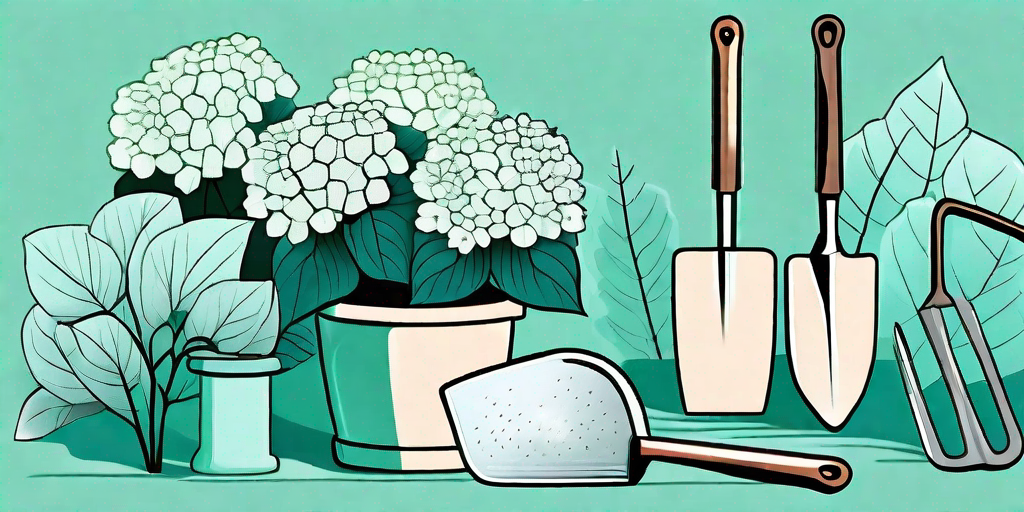
Winter, the season of snowflakes and hot cocoa, can be a challenging time for your garden, especially for your hydrangeas. These beautiful, vibrant plants are known for their resilience, but even they need a little TLC to survive the harsh winter months. So, don your gardening gloves, grab your shovel, and let's dive into the world of winter hydrangea care.
Understanding Your Hydrangeas
Before we start with the winter care tips, it's important to understand your hydrangeas. Not all hydrangeas are created equal, and different types have different needs. Some are like the tough, rugged adventurers who thrive in the cold, while others are more like the delicate snowflakes that prefer a cozy indoor environment.
So, the first step in winter hydrangea care is to identify the type of hydrangea you have. The most common types are Bigleaf hydrangeas, Panicle hydrangeas, Smooth hydrangeas, and Oakleaf hydrangeas. Each type has its own unique characteristics and care requirements.
Bigleaf Hydrangeas
Bigleaf hydrangeas, also known as Hydrangea macrophylla, are the most common type of hydrangeas. They are known for their large, round flower heads and their love for warm, humid climates. Unfortunately, they are also the most sensitive to cold, so they need extra care during winter.
Bigleaf hydrangeas bloom on old wood, which means the flower buds are formed during the previous summer. So, if the winter is too harsh and the old wood is damaged, you might not see any blooms in the spring. But don't worry, we'll share some tips on how to protect these beauties later in this guide.
Panicle and Smooth Hydrangeas
Panicle and Smooth hydrangeas are the tough guys of the hydrangea world. They are more cold-hardy than Bigleaf hydrangeas and can tolerate colder temperatures. Panicle hydrangeas, also known as Hydrangea paniculata, are known for their cone-shaped flower heads, while Smooth hydrangeas, also known as Hydrangea arborescens, are known for their large, white flower heads.
Both Panicle and Smooth hydrangeas bloom on new wood, which means they form their flower buds in the spring. So, even if the winter is harsh, they can still bloom beautifully in the spring. However, they still appreciate a little extra care during winter.
Oakleaf Hydrangeas
Oakleaf hydrangeas, also known as Hydrangea quercifolia, are unique because of their oak-shaped leaves. They are also more cold-hardy than Bigleaf hydrangeas, but less so than Panicle and Smooth hydrangeas. They bloom on old wood, so they need protection from harsh winter conditions.
Now that we've covered the basics, let's move on to the winter care tips.
Winter Care Tips for Hydrangeas
Winter care for hydrangeas involves protecting them from cold temperatures, drying winds, and heavy snow. Here are some tips to help your hydrangeas survive the winter and bloom beautifully in the spring.
1. Mulching
Mulching is like giving your hydrangeas a cozy blanket for the winter. It helps to insulate the roots and protect them from cold temperatures. Apply a thick layer of mulch around the base of the plant, but be careful not to cover the stem or crown of the plant as this can lead to rot.
2. Wrapping
Wrapping is another way to protect your hydrangeas from the cold. It's especially useful for Bigleaf and Oakleaf hydrangeas that bloom on old wood. You can use burlap, frost cloth, or even old bed sheets to wrap your hydrangeas. Just make sure to remove the wrapping on warmer days to prevent overheating.
3. Pruning
Pruning is a bit tricky when it comes to hydrangeas. For Bigleaf and Oakleaf hydrangeas, it's best to prune them after they bloom in the summer, as they bloom on old wood. For Panicle and Smooth hydrangeas, you can prune them in late winter or early spring, as they bloom on new wood.
FAQs
1. Should I water my hydrangeas in the winter?
Yes, but not as much as in the summer. Hydrangeas need less water in the winter, but they still need to stay hydrated. Water them when the soil feels dry to the touch.
2. Can hydrangeas survive in the snow?
Yes, most hydrangeas can survive in the snow. However, heavy snow can damage the branches, so it's best to shake off the snow after a heavy snowfall.
3. What should I do if my hydrangeas don't bloom in the spring?
If your hydrangeas don't bloom in the spring, it could be due to a variety of reasons. It could be that the winter was too harsh, or you pruned them at the wrong time, or they didn't get enough sunlight. Try to identify the problem and adjust your care accordingly.
Conclusion
Winter can be a challenging time for your hydrangeas, but with a little care and attention, they can survive the cold and bloom beautifully in the spring. So, don't let the winter blues get you down. With these tips and tricks, you can keep your garden blooming, even in the coldest of winters.
Remember, every hydrangea is unique, and what works for one might not work for another. So, keep experimenting, keep learning, and most importantly, keep gardening. After all, gardening is not just about the destination, it's about the journey. And what a beautiful journey it is!















